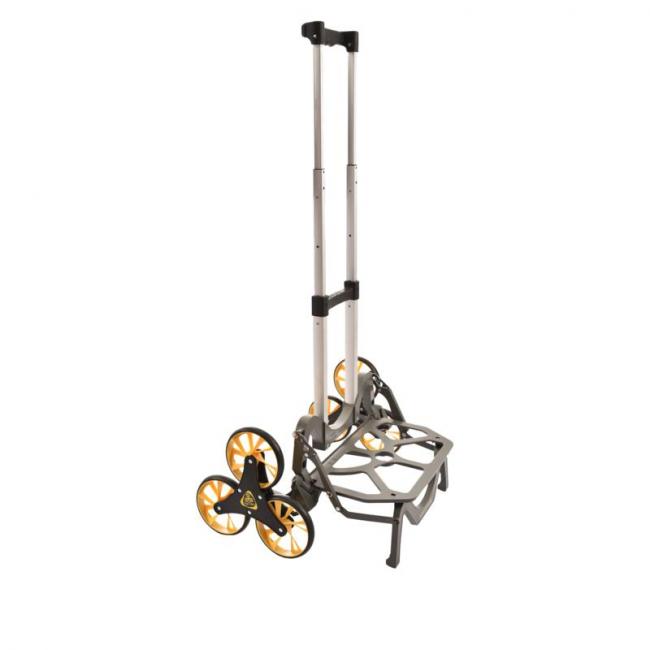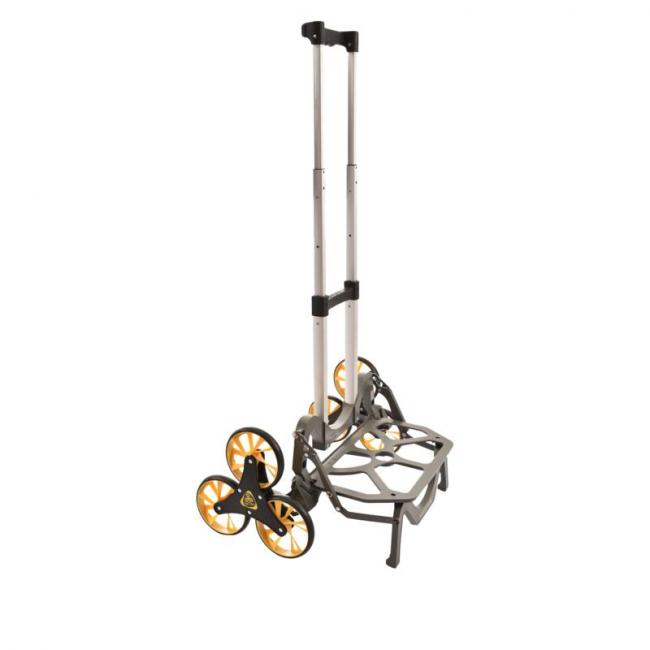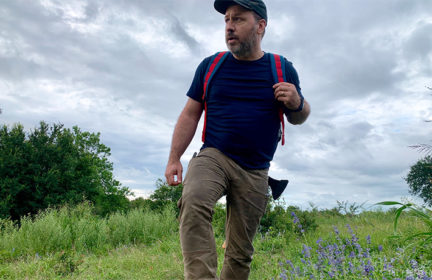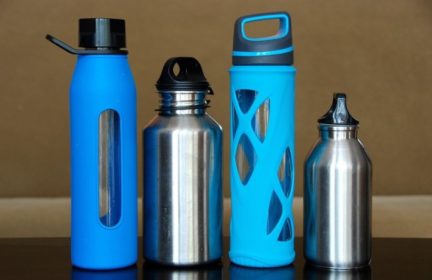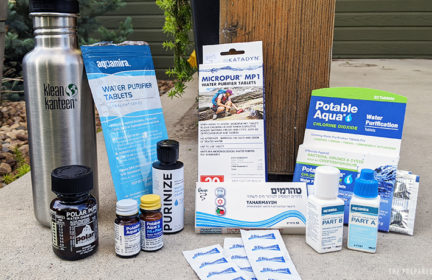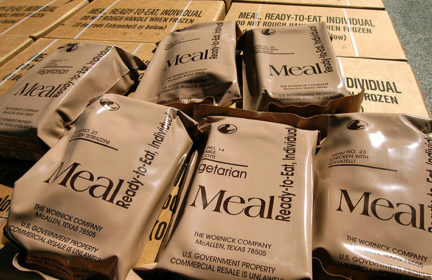Prioritized bare bones go bags on a budget
I want input, but will start things off with a few of my own ideas.
Critical preps are water, shelter, and food.
My first go bag was a daypack I happened to have lying around, with a bottle of water, Anyoo rain poncho, wool sweater, Powerbars, a map, cheap compass, pocketknife, small pad of paper/pencil, Mylar blanket, lighter, boo-boo first aid, and a slim Maglight flashlight. The bag sat in my front closet on top of an old pair of hiking boots with socks stuffed inside.
It sorta covered basics, but in a very cheap and haphazard way. But I didn’t have the money for anything better.
As I became more educated about what a go bag needs to have (thanks, ThePrepared people), I added better gear…but again, still on a budget. Here’s how I did it.
WATER—REI wholesale and sales to the rescue. Bought my metal water bottle and water filters this way.
SHELTER—I still don’t pack a tent in my go bag. Too heavy. But I still use the Anyoo rain poncho ($25/Amazon) because it’s tough and huge when not rolled up. It has eyelets on the hem for use as a shelter or ground sheet.
FOOD—I’m not a fan of indigestion during an emergency, so concentrated Powerbar-like things don’t work for me. Instead, I carry PROBAR (Wholeberry Blast) meal bars. 360 calories per bar. There are cheaper ways to scarf calories, and you can even make your own, which is *very* much cheaper, but you’ll need a vacuum-sealer. I also prefer Mountain High meals, for their ease and nutrition, but they’re expensive. I only carry three of their meals in my go bag, so the expense isn’t such a hit.
CLOTHING—I use Poshmark and sales at outdoor stores. I pick quality…but at a steep discount. Example: I found a Skea down ski jacket for $18. Other good used places: REI wholesale, threadUP, Patagonia Worn Wear. My winter layers (and yours will depend on your climate) are wicking tech poly next to my skin, then wool, fleece, down, rain shell. In summer, it’s wicking tech poly next to my skin, then a SPF camp shirt, a light fleece or down sweater for cooler nights, and a rain/wind shell. I pack each season’s clothing in its own zippered bag and switch them out twice a year. Quality inexpensive brands: Amazon Essentials, Little Donkey Andy, Columbia.
GEAR—Again, sales and the above used clothing/sports outlets carry backpacks and other camping-like gear. I’ll say it again: buy quality, lightly-used items.
FIRST AID—I’ve never been able to figure out a way to do a solid first aid kit on the cheap, so I bought a big first aid bag and filled it—very slowly—over time. (VANQUEST FATPack 7×10)
I will try to do I’ll do a post for home preps on a budget, next.
-
Comments (32)
-
Alicia - August 10, 2021
I have also done many clearance sales and coupons at REI. I’ve also been successful with Ebay once you know the brand/size you want. I found some Eddie Bauer First Ascent (their Mountaineering sub-brand) for 80% off as well as stainless Kleen Kanteen bottles. I like my Vanquest FatPack 7×10 FAK case as well but it wasn’t cheap. There are some cheaper FAK pack options on Amazon that are listed in another forum. I did find some items for the FAK at a dollar store (gauze, elastic bandages, etc). The other trick is that purchasing in multiples can help reduce the price per item. So if you have several GHBs and a couple BOBs, getting a 5 pack is typically cheaper than purchasing only 1 at a time although it’s a larger outset of cash at once. And it also can get the total to free shipping or reduce the shipping per item if it’s a flat rate.
-
Conrad B - August 11, 2021
How do you learn about the REI clearance sales and coupons?
I’ve bought many first aid kit stuff at the dollar store before or in bulk and split them with family members for their kits.
-
A2 - August 11, 2021
In my case, I Google “discount camping gear” then sign up for emailed sale notices.
-
Alicia - August 11, 2021
If you are an REI member ($20) you will be emailed and snail mailed coupons and sales fliers. You also get a percentage back for all full-priced items purchased. They also have an outlet/clearance tab on their website.
-
-
Matt Black - August 11, 2021
I was fortunate enough to hit the REI and EMS (Easter Mountain Sports) clearance racks recently and got a replacement for my old, slingback EDC. My mantra is to upgrade when it’s financially doable, as long as it is sane (read, a REAL and functional upgrade).
@A2, when you have time, consider a portable battery backup for any electronics you plan to utilize (smartphone, GPS, walkie talkies, HAM radio) and/or a small, durable solar array to top-off the battery pack.
While you’re at it, consider a Sawyer water filter (with bags).
Like you, I don’t have a tent in my BOB, but I do have a tarp big enough to provide a barrier to the ground and enough paracord to create a small shelter.
-
A2 - August 11, 2021
My current bags are much more comprehensive, though they’ve been the work of years. This thread was just for bare bones go bags, so I didn’t include my current list…which is—
MY LIST (Kelty Redwing 44 Backpack)
EMERGENCY BAG CONTENTS
—GRAB FIRST kitty, kitty sling, iPhone, keys, Trail Buddy poles by front door
—If driving, add loaded Tech Bag (iPad, laptop, etc.) & Personal Item (airplane)
—(Everything else is in SUV, or in backpack)ATTACHED TO BAG
Outdoor Research sun hat, CLC Custom Leathercraft work gloves, bandana, Shemagh, Fox 40 Sonik Blast whistle, LED mini-flashlight (with stretch lanyard), running/hiking shoesON BELT
Sabre tactical pepper gel, Friendly Swede paracord bracelet, Leatherman multi-toolTOPPER LID POCKET
First Aid kit (350-piece), emergency blanket, emergency dental repair kit, insect repellentFRONT POCKET
Paper map
Passport & cash (two 50s) in neck pouch
Waterproof notepad & pen
Suunto compass
Signal mirror
Power bank for iPhone
iPhone + recharging cube & cable + earphones
128GB iDrive thumb drive with laptop & legal docs, house photos
Baofang two-way HAM radio
SKMEI women’s waterproof watch
1-month of prescriptionsFRONT POUCH—RAIN
Rain jacket
Rain pants
Baseball capSIDE POCKET 1–WATER
Metal water bottle (filled)
Water purifying tabletsSIDE POCKET 2–WATER
HydroBlu Versa Flow Water Filter System
LED Maglight w/stretch lanyard
SIDE ZIP POCKET 1–FIRE, REPAIR
Blue bag: fire-starting kit // small duct tape, sewing kit, large safety pinSIDE ZIP POCKET 2–COMFORT
2 N95 face masks, Neutrogena hydro boost lotion, chapstick, headlamp, pee funnelMAIN BAG
(Inner Pocket)
2 heavy duty contractor garbage bags
Waterproof playing cards
(From top down)
Down jacket
Meal bars, tea bags, electrolyte tabs
—(Probar Wholeberry Blast / 380 cal/per bar, 10 bars = 3 days/3800 cal.)
—(Nuun Sport: Electrolyte Drink Tablets, Lemon Lime)
Combat heavy duty body wipes
(Bath Bag)
BigOtters PCS compressed towelettes (for toilet paper/wiping up)
Travel size Dove antiperspirant
Travel shampoo
Travel Neutrogena SPF 50 sunscreen
Campsuds
Small French hand-milled lavender soap
Tissues
Comb
Travel toothpaste/brush
QTips
Floss
Carmex (pot & stick)
Nail clippers
(Winter Clothing)
Sleeping mask & earplugs
Silver grey puffer jacket
Black wicking turtleneck
Grey Meriwool merino crewneck
Black Columbia fitted polar fleece jacket
Black fleece-lined + regular leggings
2 pair Darn Tough wool socks
Bra, tech undies
(Bagged) Watch cap, gaiter, Isotoner gloves with fleece lining
(Summer Clothing)
Sleeping mask & earplugs
Black LL Bean lightweight down jacket (nights)
Grey Amazon Essentials tech wicking tee
Khaki Little Donkey Andy SPF50 breathable camp shirt
Black 95% Rayon, 5% Spandex long tank dress
Black cropped & regular leggings
Black Meriwool merino crewneck (nights)
Short & regular Darn Tough socks
Bra, tech undies
Flip flopsWARMTH: SOL Escape Bivy
KITTY DUFFLE
Carrying sling
GoTags stainless pet ID tags w/microchip info
Poo pads/garbage bag
24oz. water, 3 days kibble, collapsible food/water bowls
First aid, litter/foldable pan/scoop/bags
Halter/leash, toys
Camp towel, emergency blanket, contractor plastic bag
Brush, nail clipper
Feline First Aid + flea/tick meds + Bach flower remedy + FeliwayIN CAR
Hard hat, safety goggles, work boots
Half-face respirator with P100 filters + snow board goggles
Rain poncho (in glove box)
2-person tent
Sleeping bag & Klymit Insulated Static V Sleeping Pad + pillow
Expanded kitty gear: full-size kibble, treats, litter/pan/scoop, hard sided carrier
Full size daily supplements in plastic box
More meal bars
Case of LaCroix + gallon jugs of water
Some flannel shirts, cargo shorts, extra tech teesIN TEARDROP TRAILER
2 weeks Mountain House meals (in anti-rodent snap-lid polycarbonate box) + our favorite smoothie protein powder & Hoosier Hill Farm heavy cream powder
2 Scepter BPA 5-gallon water containers, filled + teardrop’s own HydroBlu Versa Flow water filter system + 10L gravity bag
2 40L duffels for each of us to have a change of clothing (pants, tee, shirt, underwear, socks, down vest, knit cap)
Laundry: 5-gal lidded tub, toilet plunger, clothesline, clothes pins, Camp Suds
Bedding, bath/kitchen gear, books
Propane, gas, solar
Tools, small generator -
Candles - August 11, 2021
Good idea to have a small camper ready to go. I never even thought of having a small go-bag for the dog!
-
Greg P - August 12, 2021
Very thorough & detailed list – I see that I have a ways to go, thanks for “go-by” as we used to say in the Navy…
-
-
Bob - August 11, 2021
Good morning A2,
It would be most advantageous to know your area and anticipated emergency scenarios.
Without intruding on your privacy, knowing what you’re obliged to prepare for can allow for budgeting.
Many of us work on an austere budget. Ref first aid kits and getting them stocked can be accelerated if visiting some health fairs. Health fairs mirror hurricane prep fairs in a parking lot of a typical big box store.
Once a rudimentary understanding of your scenarios working on, suggestions on acquiring good stuff at minimal costs can start. For example, where can anyone camp when on an evacuation ? Situational awareness will tell that security is required …… many a stolen multitool for otherwise preventable reasons.
Appreciated reading “dental repair kit”. Dental and overall head trauma matters are key themes in my small prepper group. One of our members is a retired dentist.
Not familiar with “combat heavy duty body wipes”. Are they ideomatically known as a towell draped around neck ?
One of my veteran organizations, Disabled American Veterans (“D.A.V.”) operates thrift stores. Some of the items donated to store are good quality and well-priced.
Strategic thoughts: whistle on lanyard, fire extinguisher for vehicle.
-
A2 - August 11, 2021
The wipes company is “Combat Wipes” (silly, I know), but the product is good: extra thick, textured, large.
-
Carlotta SusannaStaff - August 12, 2021
Agreed re Combat Wipes: they’ve come up very high in our testing and since then they’ve been a personal favorite. Something that I also really like is that they they don’t dry up – they’re literally sitting in my trailer under the sun right now and I know they’ll be fine for many more months.
-
-
Candles - August 11, 2021
Check out Sierra Trading Company. They’re part of the TJ Maxx family of stores and focus on sports and outdoorsmanship. I’ve been running for the past 7 years and get most of my running tech gear there, unless I have a really good coupon for somewhere else. They have some really high-end stuff for really good prices, especially on clearance.
I have to admit, I’m a newbie to physical prepping. I’ve been learning skills instead since 2008 because we were broke. I’m just now getting to the gathering of the containers to store two weeks of water phase of my prepping. I have basically a month’s worth of groceries, give or take, because that’s what they were saying to do for Covid.
-
Bob - August 12, 2021
Good morning Candles,
Regardless of arrival time, welcome to physical prepping.
Actually, the skills are more important than the wall tent, the field kitchen, the pioneer tools, ……
Do glance at your ratio of water to food. Consider having 30 days of water before stocking more food.
When “setting up shop”, do think about an evacuation. Something to carry the water in, some food stuffed into pockets of some jacket, …
……
Some of the most beautiful art work I’ve viewed was in and on candles – literally !
Again, welcome to the physical prepping environment.
-
A2 - August 12, 2021
Speaking of pockets—hefty fly fishing vests can make a great minimal go bag. For instance, something like this, with pockets on both sides—
-
Bob - August 12, 2021
Good afternoon A2,
In my case, they are my primary method of carrying cargo. They constitute my go bag.
Besides pockets on both sides, a couple of my vests incorporate floation work vests of closed-cell foam (like workers wear around water infrastructures).
My under the shirt body armor has 4 manufactured pockets I’ve since modified.
No cargo is carried on my back with a sometimes exception when my load-bear suspenders has something lashed to the “H” section of the suspenders. This is situation specific per peril and season.
-
A2 - August 13, 2021
Very cool, Bob!
I think I might put together a get home “go-vest” for my car!
-
-
wildfireexpert - August 13, 2021
Bare bones:
1. FREE Most important – review your insurance policies (homeowner/renter/landlord) annually.
2. FREE Pre-arrange with each person in your dwelling to have the same primary out-of-state contact in case of emergency who can receive calls and post updates on social media. Put it in each person’s cel phone under EMERGENCY
3. FREE Pre-arrange a primary AND secondary place to meet if it becomes chaotic during an emergency. (Cell phones often don’t work during emergencies because of damage to the towers or because the system around the disaster zone is overloaded–see #2 above). Put in the notes section of the cel phone EMERGENCY contact.
4. FREE Pre-arrange and provide written permission to have others pick up any children in the dwelling in case you cannot get them yourself. Explain this to the child(ren). Put the names/phone numbers/addresses of these person(s) in the notes section of each person’s cel phone EMERGENCY contact.
5. $5-$20 Buy used piece of rolling luggage at a thrift store. Size: same as what would fit under a seat in an airplane or under a bed or on a closet shelf. ($5 -$20 per piece of luggage). Each adult in the dwelling should have an individual piece of rolling luggage OR a two adults can combine their luggage. Each child should have a small, used backpack or rolling book bag (like used in elementary/middle school). These bags should be dedicated to emergency use only! Never “borrow” things from these bags intending to put them back later! These are designed to be bags that you pack and store under bed or in closet where you can forget about them unless needed.
For example, a family with 2 adults and 2 children aged 7 and 9 may need 1 piece of luggage for adults, two small, used backpack or rolling book bag for each child.
These will be your emergency “grab and run for safety” (i.e., fire drill) bags that you will fill.
6. FREE Go to each person’s closet and pick out a complete change of clothing, including a coat, socks, old-broken-in comfortable shoes/underwear/rain gear etc. Usually this is free because you can pick the ugly stuff you purchased and never wear. For children, put in clothing/shoes/etc. that are 1-3 sizes larger than needed in case you forget to update their bag and their stuff is too small when needed. (Hand-me-downs from stair-step-kids are great.)
FREE Have each child choose a comfort item (stuffed animal, game, blanket) to put in their “Fire Drill” bag.
7. $10-$40+ PETS – Buy a carrier at a thrift store for dog/cat. Go to Dollar Store and purchase a can of pop-top wet pet food, small bag of kibble (or make up small pest-proof packages from your existing pet food), leash, water bowl, food bowl, baby blanket, 2 liter bottle of water.
Put all these supplies in the carrier in a bag and stuff in the carrier. Write your name/address/phone/pet’s name in Sharpie on the outside of the carrier. When ready to run, put in pet, tie supplies to top of crate and go. (Pets go missing during evacuations and in shelters!)
NOTE: Large animals require a much different evacuation plan which will NOT be covered here. Make your plans ahead of time! If you have horses/livestock, etc., make SURE they are trained to load in horse trailers! If you can’t load livestock, let them loose after you spray paint your phone number on the hide of each animal.
8. $5-10 In adult bags: Paper maps of the geographic region! Do NOT rely on cel phone GPS!
9. $10-20 In adult bags: New, unused iphone AND android cables AND chargers. (They don’t need to be high quality, cheap ones will do just fine.) These are NEVER to be “borrowed” or taken out of the Emergency Go Bag!
10. $5 per person’s bag: From Dollar Store three cans of easily opened, ready to eat, things like Spaghettios, a bottle of water, roll of toilet paper.
11. FREE – if anyone needs prescription or reading glasses – put in an old pair that you don’t use anymore.
12. FREE (you already have them) Prescription medications: if not able to place in dedicated “fire drill” evacuation bag, make sure you know where the medications are so they can be grabbed quickly and stuffed in the bag.
13. $5-$15 N-95 particulate respirator masks (3 each) MUST BE N-95 MASKS! Do not substitute any other type of face mask!
For each adult bag: $30 up depending on your thrift store finds.
For each child backpack or rolling book bag: $15 up
For small/medium dogs/cats: $20-40 up depending on price of used crates
-
A2 - August 13, 2021
Great ideas, wildfireexpert!
Some thoughts—
Rolling luggage is great unless you’re on foot, roads are blocked by downed trees, roads are dirt, there’s snow, or a wheel breaks. That’s why I choose a backpack. It covers more scenarios.
The pet carrier you mention also assumes bugging out in a vehicle, which is fine, but one needs to allow for an on-foot bug out as well. For my cat, for instance, I use a zippered sling (Cat-in-the-bag E-Z-Zip Cat Carrier Bag) lined with a puppy pee pad. I’ve also trained my cat to be used to traveling with a vest on. I attach a leash to the sling. She also has her own small kitty duffle with a ziplock filled with kibble, bottle of water, camp towel, and other items. I store a hard-sided crate in my car, but never assume I’ll be able to bug out that way.
-
A2 - August 15, 2021
Thinking about this further, one could have a go bag AND a folding luggage trolley. Best of both worlds—need to bug out over rough terrain: use the backpack. Bugging out over smooth surfaces? Use the luggage trolley. If the terrain starts out smooth and you’re using the trolley, then turns rough, you could either ditch the trolley or carry it folded up.
Plus, the trolley would allow one to carry an additional item, like a pet crate or another backpack.
-
Bob - August 15, 2021
Good morning A2,
Good prepping ! Much of prepping is about thinking.
It could be an ideal prepper weekend training day to try using the grocery trolley over rough terraine. It can always be ditched if and when situation dictates so.
Some of the advanced militaries are already using losd-bearing “wagons” like the grandma trolley … mine actually was given me by daughter that she used for groceries. Besides designs for rough terraine, some of these military “wagons” can float.
My infantry style evac incorporates a trolley.
-
LBV - August 17, 2021
My on-foot bug out uses a trolley jack. I can’t carry my dog as well as my bag so putting both on the trolley jack, means I can do both. However the wheels are large so hopefully will mean I can pull them over things.
-
rangerjohn - September 25, 2021
I like the trolley idea, and I’ll raise you a stair climbing dolly, folding, 250 pound capacity.
-
rangerjohn - September 25, 2021
I keep a stair climbing dolly in the back of the truck, collapsible, 250 pound capacity.
-
wildfireexpert - August 17, 2021
@A2 – my ideas in the post above are “Bare Bones” evacuation bags that a person or family can afford . These can be stored for years and thrown in a car to leave a disaster area in 3-5 minutes max.
People with a preparedness mindset will ALWAYS think of the “what-ifs” like bugging out on foot, etc but most folks are never going to leave in anything but a car
I have actually given this list to a doctor in an apartment downtown, a retired social worker in a senior mobile home park, and a nurse in a home at risk for wildfires. None of these people are capable of thinking that they may have to evacuate on foot—ever. They simply don’t think about it. They are not stupid, it just isn’t part of their thinking. (Btw, two of the three scoffed and only did go-bags to humor me.)
The “Bare Bones” list is only $30 per adult, $15 per kid, and up to $40 per pet if they don’t already have a carrier.
All of these folks will flee by car to a relative or Red Cross shelter., probably at the last moment. But, this Bare Bones” list will at least get them to do the free pre-planning (I hope) -
A2 - August 18, 2021
Good morning, wildfireexpert,
I appreciate the dilemma, having gone through those types of conversations with all my extended family members and several friends. Although everyone hears about wildfire and earthquake preparedness, the will is not there to do anything much beyond an overnight bag to pop in the car…if that. Hell, my spouse wouldn’t even do *that* without my having put bags together for each of us. And preplanning is a beast of a job even if people actually get around to making the time. (sigh) But as you say, they can’t conceive of having to evacuate on foot, nor do they really think about it again, once it’s been suggested. And yes, frequently their response is to scoff.
For these types of folks, my advice has been: pack a change of clothing/shoes, rain poncho, “space blanket”, bottle of water, favorite food bars, small bath kit, at least one week of current medications, small purchased first aid kit, several N95 masks, flashlight, second set of keys, charging cable for phone. Wheeled bag, duffle, or day pack, their call. Most have used duffles and keep them in their cars.
-
wildfireexpert - August 18, 2021
@A2 – Yup. That’s what I was thinking with “bare bones”, better than nothing, affordable and doesn’t require doomsday thinking. IMO, the “free” things like pre-arranged meeting places, contact numbers are waaay more important than gear .
I think we’re soulmates based on our life experiences… -
A2 - August 18, 2021
🤝
-
Alisa Felix - August 18, 2021
Walking places isn’t part of anybody’s thinking here in the USA. At least probably 90% of people. Most everyone travels everywhere by car or public transport and many don’t even live within walking distance of a store. So suddenly thinking of evacuating by foot or even attempting it is unlikely to happen.
Staying physically fit and going on walks, hikes, and runs often is something we can do to combat this mindset.
-
Candles - August 19, 2021
I think this is a good list filed under “Something is better than nothing.” It’s great for someone who just started (like me) to put something together just to have something ready to go. You can always upgrade things later. I’m currently focused on my in-home stockpile because I just started, but I’ve been debating putting something together for a mobile situation, just to have something.
More than likely, most American mobile situations will be a FEMA or Red Cross shelter, in which a suitcase might blend in better than a hiking backpack. That’s just an undeniable fact.
I like the idea of having both a backpack and a suitcase set aside, keeping one set up for a shelter and the other for an on-foot scenario. That way if you’re going to a shelter, you can add more stuff that would work for helping you get a job in your new city if you’re totally displaced, like toiletries and dress clothes. You could keep the backpack more geared towards camping supplies.
-
Gideon ParkerStaff - August 19, 2021
That is a good thought Candles, about using a suitcase if evacuating to a shelter to fly under the radar and not be that bug out bag target.
I researched into what it would be like to evacuate to one of these shelters and made a kit based on what I learned and thought would be good to pack (see below) but didn’t put a bag in there. From what I learned, you will want one that can be locked securely, because unfortunately there are wandering hands often in those shelters from people who may have not been as prepared.
Also, the shelter bag I think should be more tailored to comfort rather than pure survival. Extra snacks and light are definitely needed, but if you didn’t have anything, the shelter should be able to provide the necessities to keep you alive. Things like towels, bedding, and entertainment options are probably a higher want than in a bugging out to the woods situation.
-
A2 - August 20, 2021
Good afternoon, Gideon
I really like this list but have one personal concern—I live in the Pacific Northwest and having a packed piece of rolling luggage would be great for escaping a wildfire and driving to an evac shelter, but the alternate emergency of an earthquake could easily make roads impassable, meaning we can’t drive / we’re walking / a rollie just became a nightmare when navigating messed up roads…even if we were *still* going to an shelter.
Your thoughts?
My preferred bug out, if roads are open, is to drive both our SUV and truck/teardrop trailer as far away from the emergency event as possible (like 100 miles or more). The teardrop is packed for that. But if roads are closed, an on-foot evac to a shelter is more likely…and that’s when a backpack comes in handy.
And of course my very favorite response is to shelter in place if at all possible.
-
Gideon ParkerStaff - August 20, 2021
You do have backpacks and duffle bags that also have rolling capabilities. For your wild fire evac you can use the rolling feature and if you have to carry the pack like during an earthquake you can throw it on your back.
I don’t think these will stand out at all as some tactical/prepper person with lots of great stuff inside their pack.
I don’t recommend these for bugging out, but as a comfort bag to evacuate to a fema/red cross shelter then I think these could be a great solution.
-
-
- News for the week of 2025-07-07 - 5 days ago
- Fun ways to teach kids outdoor/survival skills - 2 weeks ago
- News for the week of 2025-06-30 - 2 weeks ago
- News for the week of 2025-06-23 - 3 weeks ago
- News for the week of 2025-06-16 - 3 weeks ago
This forum is heavily moderated to keep things valuable to as many people as possible. Full community policies are here. The basics:
- 1. Be nice to each other.
- 2. Stay focused on prepping.
- 3. Avoid politics, religion, and other arguments.
- 4. No unfounded conspiracies, fake news, etc.
- 5. Debate ideas, not people.
